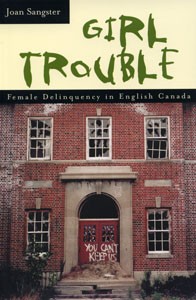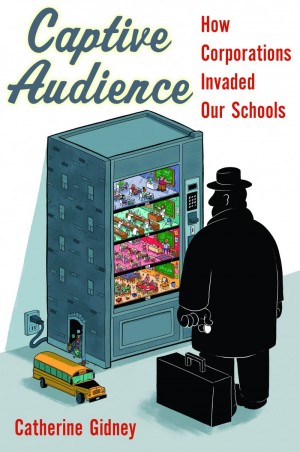
Girl Trouble
Female Delinquency in English Canada
Rarely a week goes by when juvenile delinquency or the Young Offenders Act are not discussed in the dominant media. Are we witnessing a moral panic over youth crime or a spate of “child-blaming” driven by the politics of law and order? Sangster traces the history of young women and crime and in so doing punctures dozens of myths surrounding these issues. Girl Trouble uncovers the voices of girls and their families who are caught up in the juvenile justice system, and provides a critical look at the definitions of, and solutions to, female delinquency. The book fills a significant gap in Canadian social and legal history.
Praise
Girl Trouble is a “must read” for all who want to learn about the manner and reasons that young women and girls become ensnared in the widest, deepest, and stickiest net of social control. After reading this book, you will know why the pursuit and penalizing of women and girls is a pernicious exercise of state power and authority.
– Kim Pate, Executive Director, Canadian Association of Elizabeth Fry Societies
[This] is a valuable text for undergraduate students and those largely unfamiliar with the politics and regulation of juvenile delinquency. It demonstrates the importance of race, class, and gender in defining deviance and in determining who goes to youth court and later training school. Furthermore, it shows that girls and their families were not simply passive recipients of “justice” but instead used the law to their own end and sometimes resisted the interventions and surveillance foisted upon them.
– Canadian Journal of Women and the Law
Girl Trouble is remarkably illuminating, the product of intricate and wide-ranging research, and the exemplification of history used in the service of socially-transformative, progressive ideals.
– Constance Backhouse, Professor of Law, University of Ottawa
Girl Trouble deserves a wide readership. The first two chapters will be very useful in the classroom. They provide an accessible discussion about the theoretical trends concerning deliquency, and an overview to guide readers’ understanding of the chronology and the concepts that have shaped policies on delinquency from the introduction of the Juvenile Delinquency Act in 1908 to serious criticism of it in the 1960s. The general reader trying to make sense of alarmist headlines about girls and delinquency will find Joan Sangster’s sensitive treatment of this subject both informative and thought provoking.
– Atlantis
Sangster’s analysis marks an important contribution to the feminist project of bringing women and girls into view. She provides use with the historical backdrop we need to inform current criminological debates over state and public responses to girls in trouble.
– Elizabeth Comack, Professor of Sociology, University of Manitoba
Contents
| Acknowledgements | |
| Chapter 1 | Introduction |
| Chapter 2 | Defining Delinquincy |
| Chapter 3 | "An Ounce of Prevention" |
| Chapter 4 | Judging Girls in Court |
| Chapter 5 | Treating the Intractable |
| Chapter 6 | Race, Gender, and Delinquincy |
| Chapter 7 | Conclusion |
| Notes | |
| Index |



